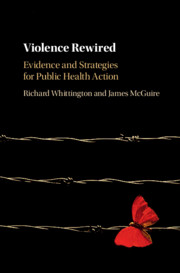Book contents
- Violence Rewired
- Violence Rewired
- Copyright page
- Epigraph
- Contents
- Figures
- Tables
- Boxes
- Foreword
- Acknowledgements
- Introduction and Overview
- Part I Origins
- 1 The Prospect of Human Violence
- 2 The Roots of Human Violence
- 3 The Biology of Violence
- 4 Developmental Factors in Violence Propensity
- 5 Structural Violence
- Part II Solutions
- Rewiring Our Expectations
- Appendix Major UN Initiatives to Address Violence, 1986–2018
- References
- Index
1 - The Prospect of Human Violence
Pessimism or Realism?
from Part I - Origins
Published online by Cambridge University Press: 13 March 2020
- Violence Rewired
- Violence Rewired
- Copyright page
- Epigraph
- Contents
- Figures
- Tables
- Boxes
- Foreword
- Acknowledgements
- Introduction and Overview
- Part I Origins
- 1 The Prospect of Human Violence
- 2 The Roots of Human Violence
- 3 The Biology of Violence
- 4 Developmental Factors in Violence Propensity
- 5 Structural Violence
- Part II Solutions
- Rewiring Our Expectations
- Appendix Major UN Initiatives to Address Violence, 1986–2018
- References
- Index
Summary
Violence is a global problem with a history as long as human evolution. It has a recurring presence in our lives, either directly when we are exposed to hostile words and actions by people around us or indirectly through a steady stream of news and frequent portrayals in fiction which turn us into more or less willing witnesses of other people’s violence or victimisation. Violence blights our lives through actual harm or through the fear and wariness generated by hearing and seeing what happens to others. Even if we escape exposure to actual violence throughout our lives, our sense of safety in the world will be shaped and distorted by media reports of what is happening nearby and far away. So in trying to think about and tackle the problem of human violence, there is a real risk of despair followed by resignation or calls for a crackdown on whoever is seen as the guilty party. The problem is undeniably complex with multiple inter-related causes and widespread impacts across huge populations and specific vulnerable individuals. Some even see it as beyond definition as a concept (Schinkel, 2010), making prevention efforts ultimately meaningless. But complexity is only part of the problem underpinning our attitude to violence. Deeper social forces are operating which can lead us toward a sense of hopelessness about the future.
- Type
- Chapter
- Information
- Violence RewiredEvidence and Strategies for Public Health Action, pp. 15 - 36Publisher: Cambridge University PressPrint publication year: 2020



